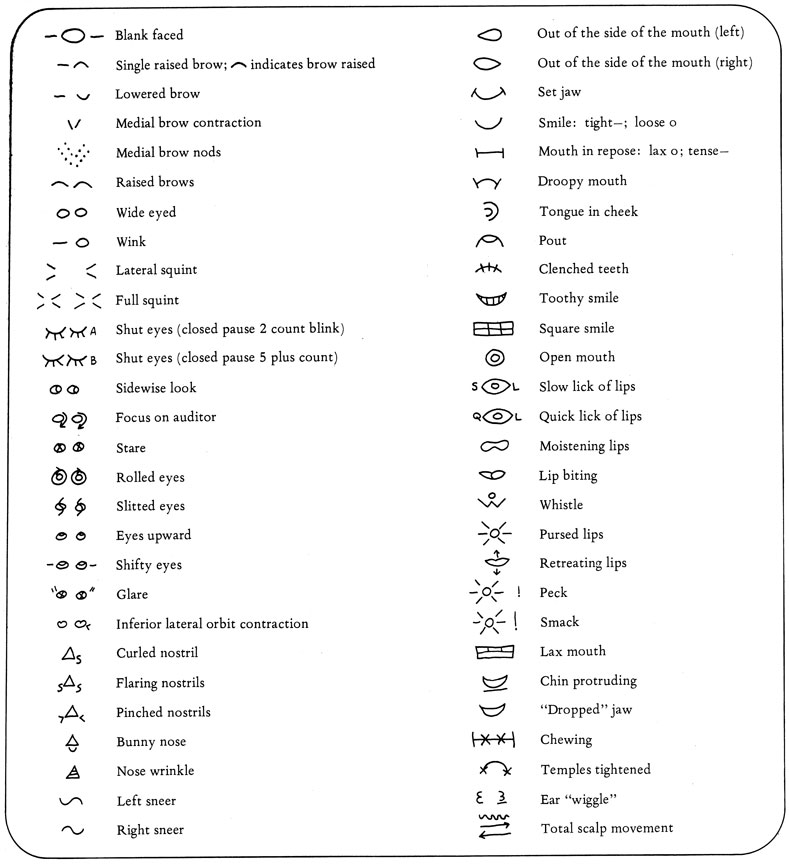Image from Kinesics and Context, University of Pennsylvania Press, 1970. Found in: Judee K. Burgoon and Thomas Saine, The Unspoken Dialogue: an Introduction to Nonverbal Communication, Houghton Mifflin, 1978
THIS SAMPLE FROM BIRDWHISTELL'S KINESIC RECORDING SYSTEM SHOWS SYMBOLS FOR FACIAL EXPRESSION
The next stage of analysis is to look at how the kinemes are combined so that they take on wordlike qualities. These are called kinemorphs. Kinemorphs are combined, in turn, into classes and complex instructions that have the same properties as sentences. A come-hither facial expression (direct eye contact, slight smile, head tilted downward) coupled with a beckoning gesture would be an example. It is only at the level of kinemorphs and combinations of kinemorphs, then, that the interpretation of meaning becomes possible in Birdwhistell's system. He is more interested in identifying which behaviors and sequences of behaviors are frequently used that in cataloguing the meanings of the behaviors.

![[ToC]](11_1toc2a_t.jpg)